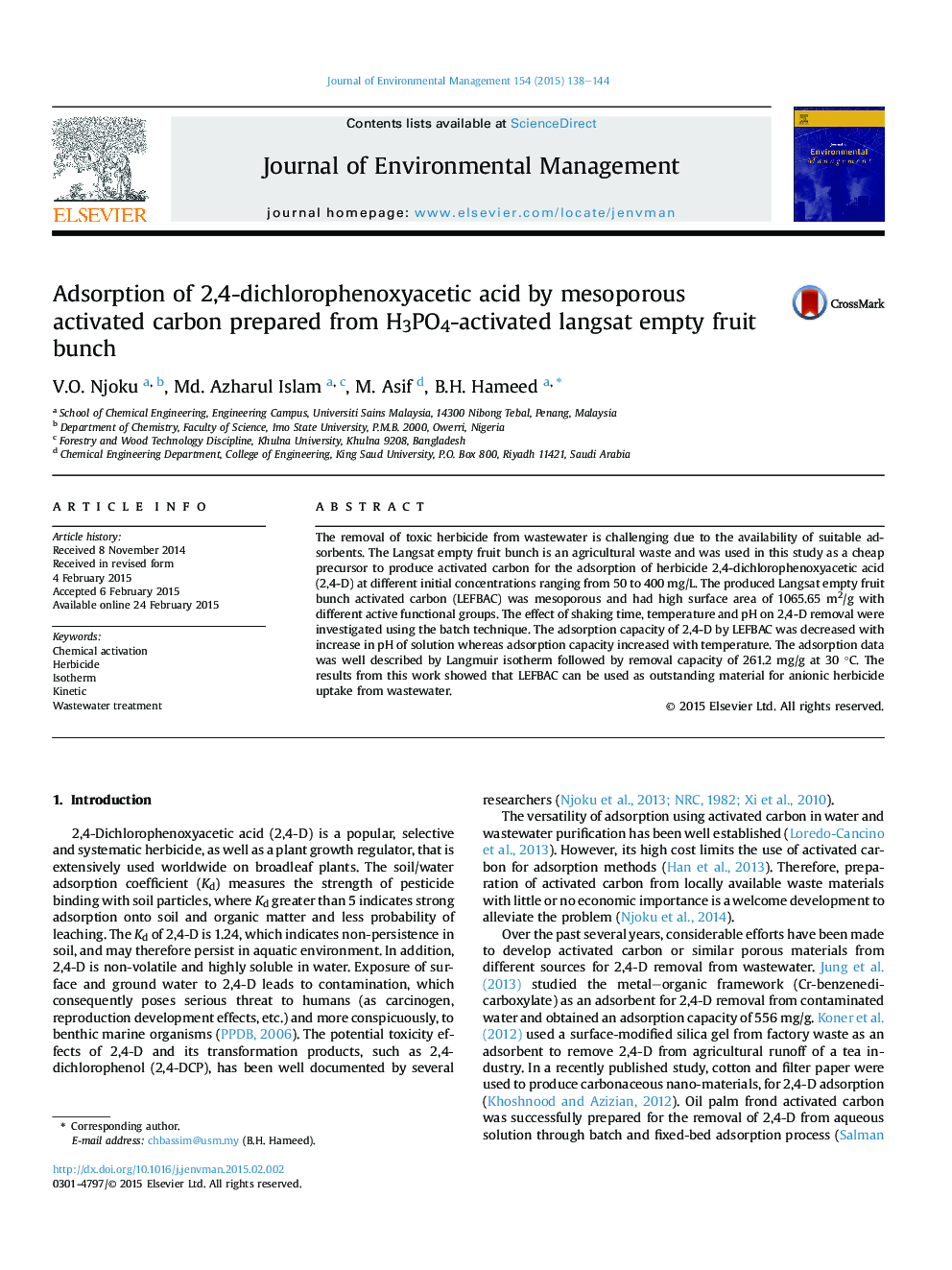| Article ID | Journal | Published Year | Pages | File Type |
|---|---|---|---|---|
| 7482396 | Journal of Environmental Management | 2015 | 7 Pages |
Abstract
The removal of toxic herbicide from wastewater is challenging due to the availability of suitable adsorbents. The Langsat empty fruit bunch is an agricultural waste and was used in this study as a cheap precursor to produce activated carbon for the adsorption of herbicide 2,4-dichlorophenoxyacetic acid (2,4-D) at different initial concentrations ranging from 50 to 400 mg/L. The produced Langsat empty fruit bunch activated carbon (LEFBAC) was mesoporous and had high surface area of 1065.65 m2/g with different active functional groups. The effect of shaking time, temperature and pH on 2,4-D removal were investigated using the batch technique. The adsorption capacity of 2,4-D by LEFBAC was decreased with increase in pH of solution whereas adsorption capacity increased with temperature. The adsorption data was well described by Langmuir isotherm followed by removal capacity of 261.2 mg/g at 30 °C. The results from this work showed that LEFBAC can be used as outstanding material for anionic herbicide uptake from wastewater.
Related Topics
Physical Sciences and Engineering
Energy
Renewable Energy, Sustainability and the Environment
Authors
V.O. Njoku, Md. Azharul Islam, M. Asif, B.H. Hameed,
